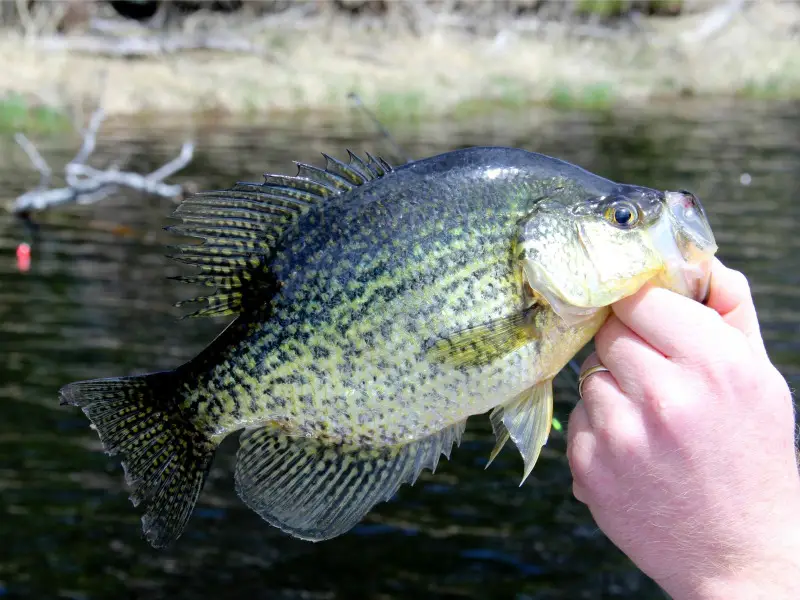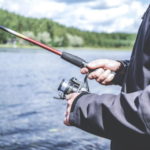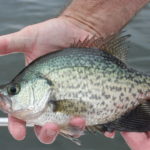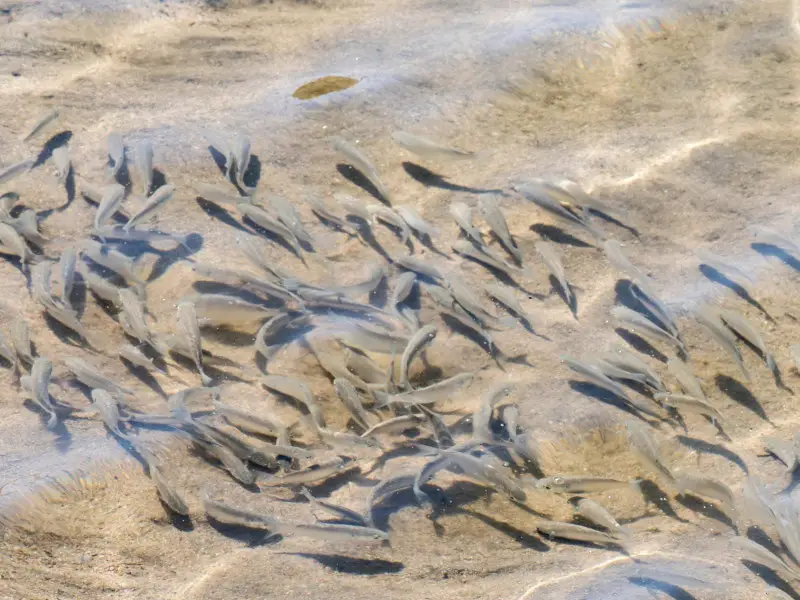Crappie is the Louisiana state fish, named after the French word “crapet” meaning “any fish in the sunfish family.” Anglers seek these fish and wonder what role scent plays in their catch.
Natural scents that mimic fish, crustaceans, and aquatic insect scents attract Crappie. However, some other scents, such as garlic and anise, work exceptionally well. Finally, bait manufacturers make scent blends that combine crappies’ favorite scents with bite stimulators like amino acids.
The rest of this article will detail how fish use their sense of smell, what scents Crappie like best and worst, and how jigs best contain desired odors.
Note: most links in this article are Amazon.com Affiliate links, see Affiliate Disclosure, thank you.
What Smells Do Crappie Like Best?
Fish stories brim with accounts of scented bait that pulled in the biggest catch. The question is, which scents do the trick?
Fully grown Crappie enjoy any of the following:
- Minnows
- Frogs
- Crawfish
- Crawdads
- Shad
Generally, amino acid and nucleotide smells, like ground shrimp and anchovy, will trigger fishes’ hunger. Commercial crappie scents manufactures assert that fish compound and fish oil aromas get Crappie biting. Fishermen also swear that anise oil works well for Crappie.
Angler tales boast that fishers smelling of cheese, garlic, and coffee also bring in a great catch.
Luckily, that means you can enjoy that cup of coffee during your dawn fishing trip or a bag of garlic cheese curds for a nighttime troll.
What Are Wild Crappie Attracted To?
If a Crappie sat down at a bar, what would he or she be looking for?
In the wild, crappies eat bugs, worms, small fish, or crustaceans that dart about in the bottom of the water. Lures and jigs that mimic live fish in smell, movement, and color will catch their fancy.
What does shrimp, crawfish, or minnow that live in the water where you drop a line look like? Are they pink, orange, long, short, curved, or straight? Select a lure that is similar in color and length to local fare. Once you find the perfect look, add your scent and drop your line.
Find out what Crappie bait in your town normally looks like and when you fish, pick a lure and jig that dresses the part.

What Is Our Favorite Bait Scent For Crappie?
Without a doubt, Pro-Cure Crappie & Panfish Magic Super Gel is our favorite. The reason for picking Pro-cure gel scent is because it gets bit, is easy to use, and stays on the lure well. Also, we love to support local, and this is a local company that makes great products that we use daily for salmon fishing.
Of course, there are a few other products that we would use without hesitation. Berkley Powerbait crappie attractant is a great item and pairs well with Powerbait items, like Powerbait Maggots or Gulp minnows.
Pautzke Fire Gel crappie attractant is another great product. Be prepared with an applicator, like a popsicle stick or toothpick. Pautzke also makes a lot of other items that crappie will bite, such as crappie fireballs.
Crappie attractant is not the only scent to put on your lures. Anise is a top performer and can be purchased from most manufacturers. Shrimp scent is another crappie favorite, and many crappie blends contain it, but don’t miss a chance to use straight shrimp scent if the blends are not performing.
Keep in mind that in many bodies of water, it is legal to chum for crappie or minnows that crappie would feed on. Selecting a chum with a light scent is always the best practice.
Now, what scents should you avoid when fishing for Crappie?
What Smells Do Crappies Detest?
Do Crappie “think about” smells? How do they associate smells?
Scientists recently discovered that fish process smells a lot like humans do. However, there are some differences, as well.
While humans breathe through their noses, fish do not.
Crappie breathe through gills and smell through nostrils or “nares.” The “olfactory system” interprets chemicals and makes judgments based on information received. Water motion pouring through nares or over cilia allows fish to smell. Water movement can occur when a fish swims or when water flows.
Still, the way fish process smells is similar to how humans process them, especially when it comes to scents that they detest.
Ever smell smoke and automatically go on high alert? Fish also associate smells with danger. Odors like boat gasoline, lotions, sunscreens, bug sprays, and smoke indicate that a human, and potential hazard, is near. Avoid strong human scents when dropping in a line.
What Is the Best Way To Apply a Scent to a Lure?
Once you determine which scent you will apply, you must decide the best way to spread the smell.
Crappie scents come in a variety of packages. Viscous, chapstick-like packaging makes for easy application when the product doesn’t melt in the sun. The tubed product slides out well, although it won’t stand up independently.
Spray cans apply evenly and work well when used outside of the wind. When you purchase, consider the smell and whether you can stomach it on your body. In the end, find an application you can manage in your fishing environment.
Crappie are complex fish that use smell, taste, and sight for decision-making. When is the best time to get out there and catch one?
When Is the Best Time To Catch a Crappie?
When fishing for Crappie, head out before breakfast or after dusk. Crappie are at their busiest in the dark. They seem to do well when waters are cool and to bite voraciously during spawning season. They sit at the bottom of the water and attack their prey, so shade is their partner in crime. The adage goes that when you challenge one sense, others take over, which boldens my faith that it is crucial to scent a hook.
But what about other senses? Do crappies see and taste the lures you use?
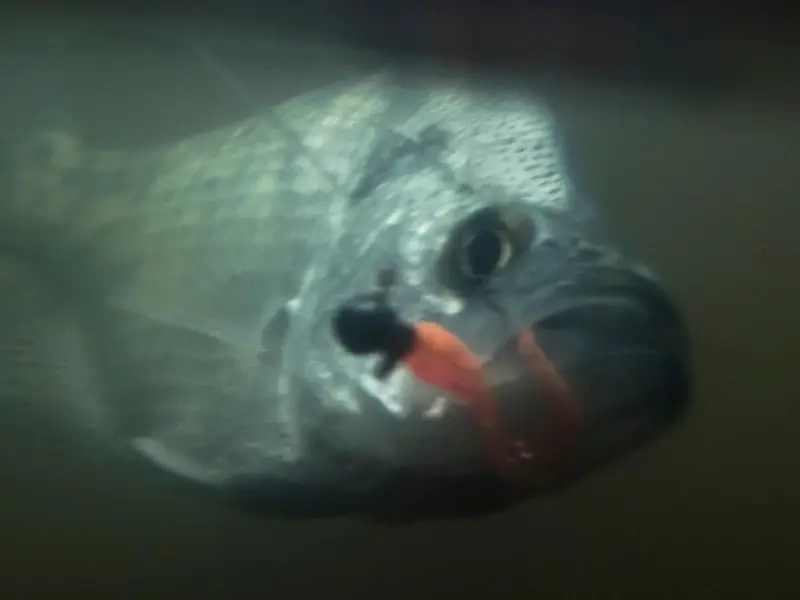
What Can a Crappie See?
We know that crappies rely on smell, but how strong is their eyesight?
Crappie can see. However, sight is not their most keen sense. Fish rely more on what they can smell or feel for information. Sediment and cover in murky water are common places where a Crappie would sit and wait for food. Even in clear water, however, little light reaches the bottom of the water.
Eyesight is not a Crappie’s superpower; scent, however, is a sense worth tempting. What other insights do they use?
Can a Crappie Smell?
Crappie and other fish “smell” through nostrils or “nares” when water passes chemicals over sensory cells. Fish obtain eating, danger, location, and reproductive cues through odors. Jigs that retain these delicious scents work best.
As mentioned before, crappie combine their eyesight with their keen sense of smell to survive in the most difficult environments.
Can a Crappie Taste?
Smell goes hand in hand with taste for humans. Is it the same for fish?
Fish do have a sense of taste. They prefer certain foods the same way humans do. Water temperature and environmental factors like heavy metals or soaps impact a fish’s sense of flavor. Fish develop favorite tastes based on food available in their area.
Just like a person who grows up eating bologna might crave that when they are older, fish too develop preferences and tastes for certain foods.
Final Thoughts
When fishing, consider how a Crappie thinks and take these steps to hook them in:
- Scent a lure with a fishy, crustacean insect smell.
- Feel free to enjoy coffee or garlic cheese while dropping a line.
- If angling, do not use sunscreen, bug spray, gasoline, or tobacco.
- Use a scent applicator that makes sense for you.
- Hit the water at dusk or dawn to catch a Crappie
- Enjoy the thrill of the sport.
Fish are complex beings. Entice their senses and bring in a great catch.
